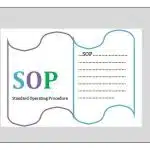Learn about the detailed manufacturing process of Benzoic Acid and Salicylic Acid ointment, including formulation steps, ingredients and preparation techniques to ensure effective treatment of skin infections and fungal conditions. It is the most popular medicine in Pharmaceutical industry.
Product Name: Benzoic acid and Salicylic acid Ointment
(Each 100 g contains Benzoic acid BP 6.00 g + Salicylic acid BP 3.00 g)
Concentration: Benzoic acid 6% and Salicylic acid 3%
Dosage Form: Ointment
Pack Size: 20 g
Batch Size (Kg): 200.00 kg
Batch Size (Quantity): 10,000 pcs
MASTER FORMULATION for Benzoic Acid and Salicylic Acid Ointment
| Item No. | Materials Name | Specifications | Unit | Theoretical Amount per Batch |
| 1 | Benzoic Acid | BP | Kg | 12.000 |
| 2 | Salicylic Acid | BP | Kg | 6.000 |
| 3 | White Soft Paraffin | BP | Kg | 55.200 |
| 4 | White Bee’s Wax | BP | Kg | 16.000 |
| 5 | Coconut Oil | BP | Kg | 110.800 |
| Total = 200.00 kg | ||||
PRIMARY PROCESSING METHOD
A. Melting and Mixing of Coconut Oil and White soft paraffin Materials:
1. Weigh and take the following materials one after another into charge vat. Then heat the materials for
(15-20) minutes at (40-55) 0C temperature.
| Name of the item | Quantity (Kg) | Note |
| Coconut Oil | ||
| White Soft Paraffin |
| Date | Temperature | Start time | Finish time | Performed By | Checked By |
B. Melting and Mixing of Benzoic acid and Salicylic acid:
2. Add the previously crushed Benzoic acid at (120-125) 0C temperature into charge vat with stirring and mix all materials properly for (15-20) minutes.
| Date | Temperature | Start time | Finish time | Performed By | Checked By |
3. Then add previously crushed Salicylic acid at (120-125) 0C temperature into charge vat with stirring and mix
all materials properly for (15-20) minutes.
| RM | Quantity (Kg) | Note |
| Benzoic Acid | ||
| Salicylic Acid |
| Date | Temperature | Start time | Finish time | Performed By | Checked By |
C. Melting of White Bee’s Wax:
4. Take the following materials at (60-65) 0C temperature into another charge vat and melt properly for
(15-20) minutes.
| RM | Quantity (Kg) | Note |
| White Bee’s Wax |
| Date | Temperature | Start time | Finish time | Performed By | Checked By |
SECONDARY PROCESSING METHOD
D. Final Mixing:
5. Transfer the step 3 and step 4 bulk volumes into the double jacket Balm and Ointment mixture machine
(planetary mixture). Finally mix the liquid for (10-15) minutes at controlled temperature (60-70) 0C.
| Date | Temperature | Start time | Finish time | Performed By | Checked By |
6. Finally the mixed bulk volume is ready for filling and transfer the bulk products into the filling machine through
the filter press machine with fixed double ( mesh size # 15 and 0.5 mm) filter.
Then finished the primary packaging and secondary packaging for final product production.
RECONCILIATION:
| A | B | C | D | E | F |
| Theoretical Batch Weight | Actual Weight | QA + IPQC Sample | Rejects (A-B-C) | Reconciliation (99-101%) (B+C+D) 100/ A | Actual Yield (98-102%) (B+C) 100/ A |
| Kg. | Kg. | Kg. | Kg. | % | % |
| Calculated by | Verified by | ||||
Read Also: Cefixime Trihydrate PFS Formulation and Manufacturing Process 2024
Azithromycin PFS Formulation and Manufacturing Process
Frequently Asked Questions (FAQs) for Benzoic Acid and Salicylic Acid Ointment Process
What is the purpose of using Benzoic Acid and Salicylic Acid in an ointment?
Benzoic acid and salicylic acid are commonly used together in topical ointments for their antimicrobial, antifungal, and keratolytic (skin-shedding) properties. Benzoic acid helps inhibit the growth of fungi and bacteria, while salicylic acid aids in exfoliating the skin and promoting cell turnover. These ointments are often prescribed to treat fungal infections like athlete’s foot, ringworm, and other skin conditions such as psoriasis and dermatitis.
How is a Benzoic Acid and Salicylic Acid ointment typically prepared?
The preparation process generally involves dissolving both benzoic acid and salicylic acid in a suitable base, such as soft paraffin or a mixture of paraffin and lanolin. The steps usually include:
Weighing the required amounts of benzoic acid and salicylic acid.
Melting the ointment base (e.g., soft paraffin) at low heat.
Dissolving the acids into the melted base while stirring continuously to ensure uniform mixing.
Cooling the mixture gradually to form a smooth ointment. The final product should be free from lumps and have a homogenous texture.
What are the safety precautions to consider during the ointment preparation?
While preparing the ointment, it’s important to follow safety measures to prevent irritation and ensure a safe product. Some precautions include:
Wear gloves when handling benzoic and salicylic acids as both can be irritating to the skin.
Work in a well-ventilated area to avoid inhaling any fumes, especially when heating or mixing.
Maintain controlled heat when melting the ointment base to prevent degradation or loss of effectiveness of the ingredients.
Ensure all equipment used is clean and properly sterilized to avoid contamination during the preparation process.

Abdus Sobhan Salim is professional experienced pharmacist in pharmaceuticals, author and founder of pharmabossbd.com, the first Bangladeshi pharmaceutical blogger since 2019.



